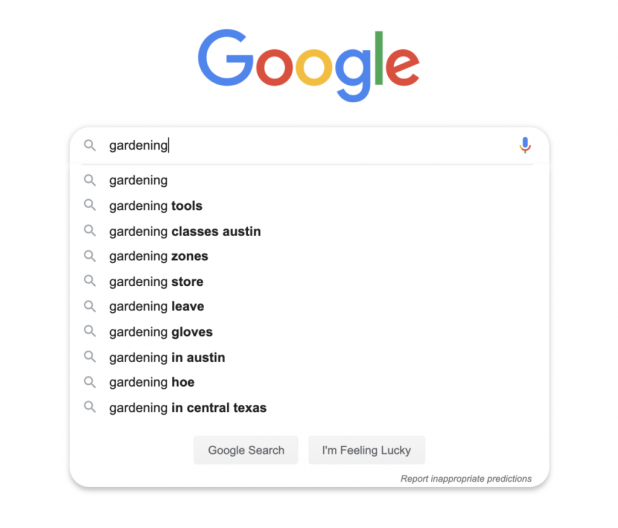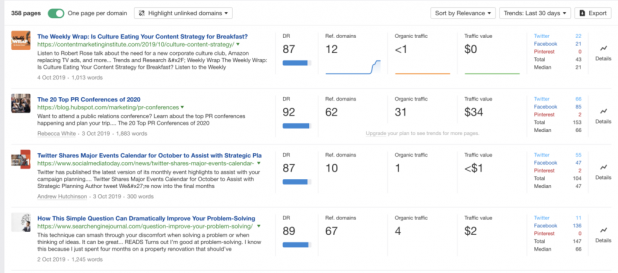We all know the image, right? The hamster on the wheel running in place, going nowhere. This is what happens to your blog if your only focus is on constant content creation. Instead, it’s important to consider your blog’s most impactful activity, and approach blogging like a businessperson rather than a writer.
Traditional Blogging Wisdom
A few tenets form the core of traditional blogging wisdom:
- Publish as many articles as possible to your blog. This should be daily if possible. Quantity is what matters. Quality still matters, but quantity matters more.
- Start your social media as quickly as possible. After all, those pages can’t grow without a constant influx of content to promote.
- Put ads on your site as quickly as possible. You can’t make any money without ads, so might as well monetize the traffic you are getting. The best option here is Google AdSense because it’s easy to setup and takes up limited real estate. (It’s actually not.)
- Following this process for long-term will eventually get your blog to a point of which you can be proud.
This is the hamster wheel of constant content creation. In this model, you can never create enough content. You’re writing constantly for your own blog. Constantly posting on social media. It consumes all your free time, with no light at the end of the tunnel.
Only fingers crossed that it’ll one day pay off.
Let’s escape the hamster wheel with a business-minded blogging mindset.
There’s a different way.
Sure, there’s still a ton work to do. But it’s laser-focused, targeted work that will grow your blog organically, and much faster than running on the hamster wheel.
Blogging with a Business Mindset
Blogging with a business mindset requires some re-framing. You’re still going to be doing some content creation for your own blog, but that content will be limited, and very purposeful.
The majority of the content you’ll write, instead, will be for guest blogs on sites which will help facilitate your growth. Eventually you may recruit some folks to write content for your blog. And in the best case scenario, they’ll actually show up on your blog’s doorstep, ready to roll.
More on that later.
The Step-by-Step Process
As your blog is in infancy stage – just getting its feet on the ground – the activity you do on a daily basis will be very different from activity you do when your blog is mature, and a well-oiled self-sustaining machine.
Let’s take a look at the following steps one by one:
- Write and publish 3-5 cornerstone articles on your blog.
- Acquire and write as many guest posts as possible as quickly as possible from moderate domain authority blogs which point links back to those articles.
- Go back to publishing one new article a week to your blog, after you have spent at least a month – if not longer (I’d even say two months) – as a guest posting machine.
- This new content on your blog should follow the hub-spoke model of content development. With your cornerstone articles acting as the hubs, and all newly created articles as the spokes.
- Acquire and write more guest posts from moderate-high domain authority blogs. You’ll get a feel for when to make this switch.
- Acquire free content for your site by offering guest posting opportunities to other bloggers. This should happen once your domain authority is strong and you have more to gain than lose.
- Aggressively pursue backlinks from sites writing about your keywords through direct but friendly cold email outreach and follow up drip sequences.
- Rinse. Repeat.
Developing Cornerstone Content
Your blog’s cornerstone content is the core of the topic you’ll be covering throughout your blog’s life. Ideally, you should be able to identify 3-5 cornerstone topics to write on for these articles with ease.
Each of your cornerstone articles should be at least 2,000-3,000 words long to position properly for Google ranking in time. They should also be centered around keywords in your niche with high search volume and relatively low levels of competition.
These cornerstone articles are living documents. They should always be updated to be current as new trends and new information affects their original version. This is an easy win as Google is now actively rewarding updated content with better search position for primary keywords. At least, in many instances.
Given these updates, your cornerstone pieces could eventually become guides, and well over 5-8,000 words in length. That’s fine! The majority of your effort creating content on your own blog should be focused on these anyhow. Not in cranking out tons of short-form articles which are highly-disposable and easily forgotten.
Quality over quantity, my friends.
The Hub-Spoke Model of Impactful Content Development
The Hub-Spoke model of impactful content development is built around the relationship between long-form hub articles and spoke articles which support the topics covered in the hub.
As mentioned above, cornerstone topics are your blog’s “hubs”. All of the related content you produce related to these hub articles are “spokes”. With domain authority flowing up to the hub from the spokes, as both start to grow, and rank for search terms in Google, there’s a great symbiotic relationship formed.
As you create more spoke articles and point these toward your hub, the hub gets stronger. As you add these spoke articles as related links on your hub article pages, the spokes get some “SEO juice” from your hub and get stronger. And so on.
Let’s take a look at an example.
Let’s assume your blog’s primary topic is gardening. Your main keyword is gardening, this is your hub and one of your cornerstone articles. A quick search of Google to see its suggested results will give you an idea of potential spokes:

Bingo! The Google predictive search tool is awesome. It pulled back several topics that would make for great spoke articles! It would be easy to create articles on gardening tools, gardening zones and gardening gloves that all point back to your cornerstone gardening article, and vice versa.
Over time you can flesh these out to write on more and more spoke topics that relate to your main topic. Linking all of these articles to each other passes SEO juice from one to the other, rising all boats in the process.
It really is a great system if you stick to it and stay consistent!
Acquiring Guest Blogging Opportunities
Guest blogging opportunities are golden when it comes to organically growing the domain authority of your blog. In fact, I would argue the first few months of content you create should NOT be on your own blog (apart from your cornerstone articles, obviously). But instead 100% focused on writing on other sites within your niche that create good content and have a strong domain authority.
However, don’t make the mistake so many other bloggers make. That is, pursuing guest posts right off from blogs with a 70+ domain authority. Why am I saying this? Well, everyone else is pursuing these opportunities as well.
An easy way to find a site’s domain authority is to use the awesome Ahrefs SEO Toolbar extension for Google Chrome. The caveat, here, is you have to have an active Ahrefs account to use the toolbar. But, you can get a $7, 7-day trial of their full software package which is worth every penny. If you’re diligent, you should be able to pull back hundreds of potential sites to pitch within your selected domain authority range within that 7 day stretch.
Here’s an example of how the Ahrefs SEO Toolbar looks live on a well-known site in the blogging world, Blogging Basics 101:

Blogging Basics 101 has strong authority in the blogging niche. If you look at DR on the Ahrefs bar you’ll see they’re at a 68. Therefore they may be out of range to pitch early in your blog’s life for a guest blog opportunity. But once you have a few published guest posts under your belt they could be worth a shot.
Sites with a DA like Blogging Basics’ receive hundreds of pitches a week. Unless you already have some published work from other sites with similar authority, you’ll be ignored.
This may sound harsh, but it’s reality.
Therefore, in the world of guest blogging, you need to crawl before you walk. So, instead, pursue opportunities in the first few months of your blog’s life from sites with a DA of 30-65 or so. These sites still likely receive plenty of emails pitching guest posts on a weekly basis, but not nearly as many as those with a 70+.
Take some baby steps and crawl before you walk. Before you know it, some momentum will be building. The links will start to flow in and with consistent content practices – both on your blog – and outside of it, things will only continue to improve.
How to Acquire Backlinks through Cold Email Outreach
Once you’ve started to build some strong domain authority and traffic’s starting to hum, the next step is to target the growth of your cornerstone content. This can be done by acquiring backlinks through cold email outreach.
For this strategy to be successful, you have to consider what value you’ll provide in return for a backlink. Will you share the article that adds the link on your social media accounts? Are these social accounts large enough to deliver an impact? Will you offer a guest post to the site that links to you on your own blog? What you’re willing to trade is important to consider before you start to draft a pitch.
There are a few ways to identify content you can pitch for backlinks in return for some equitable value.
Search Google for the main keywords for your cornerstone content. Especially check the News section on Google. This way you can see who has been writing about the term lately.
Here’s a screenshot of a search for “content strategy” along these lines:

From this one quick search you can see there are four articles from great publications that are focused on content strategy! These publications all have high DAs (so they may not be a perfect example) but you get the idea.
The trick is to reference Ahrefs or a similar tool after pulling back a few potential targets to check them out. And make sure they would be reasonable to pitch for a link in return for the value you can provide them.
Secondly, if you have that Ahrefs subscription, search your keyword in Content Explorer to see what you find:

There are some awesome opportunities to pitch for links here! You just have to know how to find the right people to pitch, and the language to use, and that’s part of what we teach.

Regardless, the moral of the story is to be selfless, provide value to others, and you’ll drive value in return. You can’t just blog and cross your fingers that the traffic will eventually come.
And whatever you do, don’t get stuck on that hamster wheel of cranking out articles just for your own blog!
Be creative! Push the boundaries of your writing by finding new opportunities away from your blog and be aggressive.
You’ll be amazed at the results.





